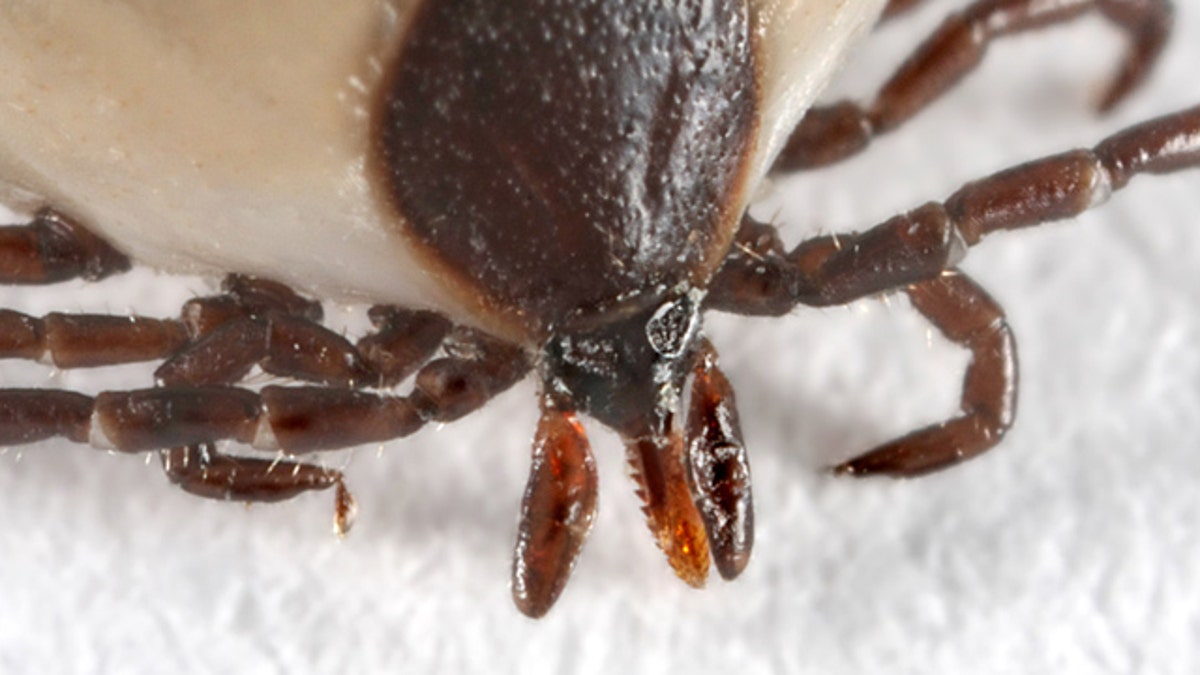
(Mark Plonsky)
Some experts are predicting an earlier and more abundant tick season this spring, potentially causing a rise in Lyme disease infection.
But don’t blame the deer. The predicted rise in ticks that carry Lyme disease is actually the result of a cascade of ecological events that started back in 2010 and involves acorns and mice, says Richard S. Ostfeld, a disease ecologist at the Cary Institute of Ecosystem Studies in Millbrook, N.Y.
The white-footed mouse is the perfect host for ticks (low to the ground and not bothered by the parasites), said Ostfeld, who has published several studies showing the population of mice, not deer, is more directly correlated to the tick population.
Leading up to this spring, there has been a perfect storm of ecological vents, which has created a large and hungry tick population looking for a “blood” meal.
In 2010, there was a boom in the acorn crop, which led to a boom in mice, who feed on the acorns, Ostfeld explained. But last fall, the acorns were scarce.
"Now, on the heels of one of the smallest acorn crops we’ve ever seen, the mouse population is crashing,” Ostfeld said.
When the mice were abundant last year, they provided a great meal for tick larvae, baby ticks that are the size of poppy seeds. Now, this large tick population has grown into nymphs and are ready for their next meal (they only feed three times in their lives), but since the mouse population has dwindled, they will need to feed on other mammals.
“This spring, there will be a lot of black-legged ticks in our forests looking for a blood meal. And instead of finding a white-footed mouse, they are going to find other mammals—like us,” Ostfeld said.
Ostfeld and his team have tracked mice and ticks for nearly 20 years. They measure the population of both animals every spring and fall.
“We have correlated the abundance of white-footed mice in one year to the abundance of infected ticks in the next year,” he said. Some experts question this hypothesis, but studies on the relationship between deer and ticks have been inconsistent.
A similar pattern occured in 2006, when there was a boom in acorns, followed by a bust the next year. That year, 2007, black-legged ticks reached a 20-year high.
The larvae will become nymphs in May through July, though because of the warm weather they may appear even earlier than May this spring. Nymphs, which are about the size of a sesame seed, are responsible for transmitting the vast majority of Lyme disease cases.
To protect yourself and your family from tick bites, follow this advice from the Centers for Disease Control and Prevention (CDC):
Avoid tick-infested areas. Ticks prefer moist environments, near wooded or grassy areas. You may come into contact with ticks while walking through vegetation such as leaf litter, shrubs or tall grass. While hiking, walk in the center of trails.
Use a repellent with DEET (on skin or clothing) or permethrin (on clothing and gear). If you’ll be in a wooded or grassy area, use repellents containing 20 percent or more DEET. Don’t forget to use on shoes and socks. Nymphs are on the forest floor and are likely to climb aboard via your feet.
Perform daily tick checks. Check your body for ticks after being outdoors, even in your own yard. If you were in a tick-infested area, use a hand-held or full-length mirror to view all parts of your body. Be sure to check under the arms, in and around the ears, inside the belly button, back of the knees, around all head and body hair, between the legs and around the waist. If you find a tick, remove it carefully with a tweezer.
Toss clothing in the dryer: Ticks may be carried into the house on clothing, but placing them in the dryer on high heat will kill them.
